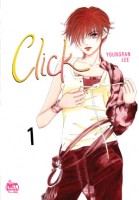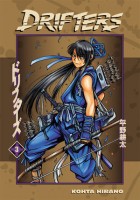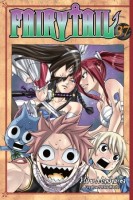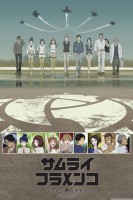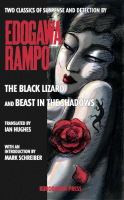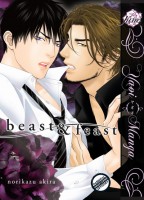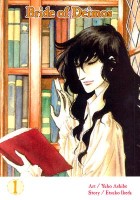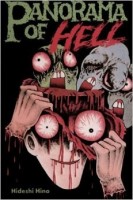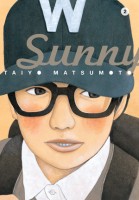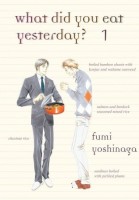 Creator: Fumi Yoshinaga
Creator: Fumi Yoshinaga
U.S. publisher: Vertical
ISBN: 9781939130389
Released: March 2014
Original release: 2007
I have been a fan of Fumi Yoshinaga and her work for quite some time now. English-language readers have been fortunate in that so many of her manga have been translated. I and many others were very excited when Vertical announced the license of her series What Did You Eat Yesterday?, a series that I have been hoping would be picked up for years. The first volume was one of the manga releases that I was most looking forward to seeing in 2014. What Did You Eat Yesterday?, Volume 1 was originally published in Japan in 2007; I am thrilled that it is now available in English. There were several reasons why I was particularly interested in reading What Did You Eat Yesterday?. It’s by Yoshinaga, from whom I’ve come to expect great stories and complex characters. The series is also a food manga, a niche that I am known to enjoy. (Actually, food often plays an important role in Yoshinaga’s manga.) And I was especially interested in the incorporation of contemporary Japanese gay life in What Did You Eat Yesterday?—the two main characters are boyfriends in their forties who live together.
Shiro Kakei is a successful lawyer at a small firm, but his real passion is food. He’s a great cook, and an extremely frugal one, too. Kakei simply enjoys a good meal. The palate of his boyfriend Kenji Yabuki, a flamboyant hairstylist, isn’t nearly as refined as Shiro’s but he certainly appreciates his partner’s creativity in the kitchen. The two of them have been dating for three years, so their relationship is well established, but they still face some challenges. Although both of their families know that they are gay, Shiro prefers to be much more discreet about his homosexuality when dealing with his coworkers and strangers. Kenji, on the other hand, is happy to have a chance to brag about his boyfriend. And just because they’ve been together for so long doesn’t mean that they don’t have to deal with old flames and jealousy. But at least they can always depend on delicious cuisine to help smooth over the bumps in their relationship.
The food in What Did You Eat Yesterday?, both the description of the meals and the care that Yoshinaga has put into drawing them, can be mouth-watering. Even the most simple dishes are beautifully portrayed, in part because food is so important to Shiro and he puts time and effort into its preparation, but also because Yoshinaga shares that same passion. There is enough instruction in What Did You Eat Yesterday? that adventurous readers could easily duplicate the featured recipes. However, the food in What Did You Eat Yesterday? works best when it is directly tied into the manga’s plot and story. Occasionally that ideal balance is missing in the first volume. The meals, while lovely, can from time to time feel tangential, almost as if there are two different manga sharing the same series—one focusing on food and one focusing on people.
I do enjoy the food and the important role that it plays in What Did You Eat Yesterday?, but in the end I’m even more interested in the characters, their relationships, and their lives. Shiro and Kenji make an intriguing couple. Out of the two of them, Shiro is the least secure with who he is and is very concerned with keeping up appearances. He comes across as very brusque and some find him unlikeable as a result, but it’s a defense mechanism. Kenji seems to be much more comfortable with himself. The two of them aren’t frequently affectionate, at least not overtly so, but they do care about each other. It can be seen in the little things that they do—such as simply offering to carry a heavy bag—and in their more subtle interactions. Shiro often tries to smooth over arguments and hurt feelings the best way he can: through cooking. And that’s one of the things What Did You Eat Yesterday? does best—showing how people connect and communicate through food.


